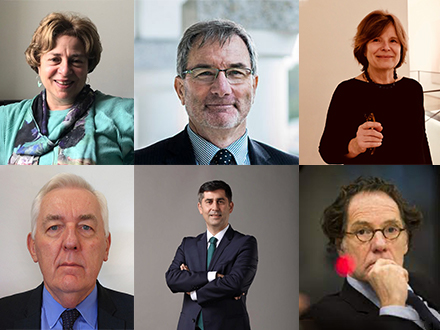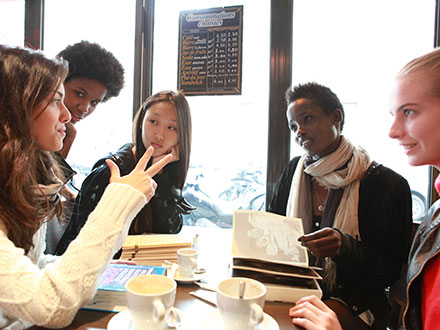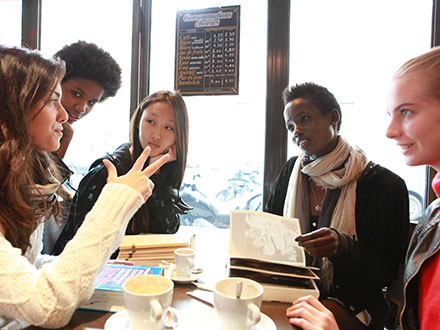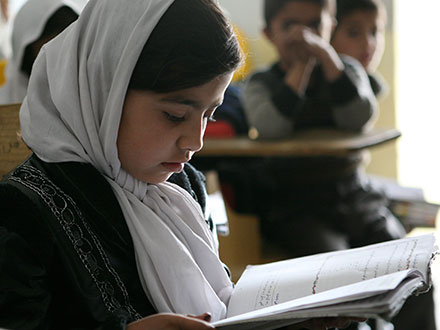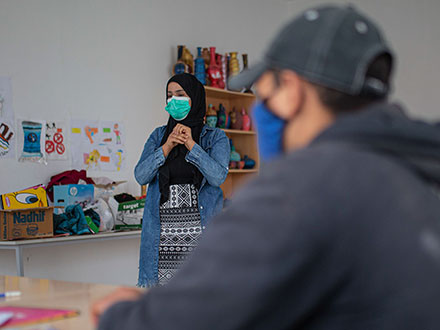Australian Radical Right Narratives and Counter-Narratives in an Age of Terror
by William Allchorn
As key street movements continue to splinter and become more ideologically extreme, the spectre of Australian radical right violence is now considered a notable security threat. Australia’s Home Affairs took the step to ban the UK-based Sonnenkrieg Division (SKD) from activities in Australia in March 2021 – citing in particular “SKD’s active promotion and encouragement of terrorism” having the potential to “inspire Australia-based extremists.” [1]
In the past 12 months alone, 40% of terror-related investigations in Autralia are related to the extreme right. Furthermore, in the wake of the Christchurch massacres, the Australian radical right has shifted away from mainstream platforms (such as Facebook and Twitter) towards alternative social media platforms (such as Telegram and especially Gab) where reports suggest that their expressions have become more explicitly anti-Semitic, aggressively racist.[2]
Attention to radical right extremism has also redoubled over the past two years due to the recent terror attack targeting New Zealand mosques on 15 March 2019. The Christchurch attacker, Brenton Harrison Tarrant, originally hailed from Grafton, New South Wales, some 380 miles north of Sydney, before moving to commit acts of terror on New Zealand’s South Island. The Christchurch incident has therefore led Australian policymakers, politicians, and civil society groups to highlight radical right extremist, with the deputy director of Australia’s Security and Intelligence Organisation (ASIO) recently warning of a quadrupling of its radical right terroristic case load in the past five years.[3]
Radical Right Extremist Groups and Narratives in Australia: Declining Anti-Muslim Populism and Ethno-Nationalism vs. Rising White Supremacism and Chauvinism
In the most recent country report for the CARR-Hedayah Radical Right Counter-Narratives (RRCN) project, we researched 14 of Australia’s key, extra-parliamentary radical right extremist groups and the violent and ideological narratives that they have propagated over the past ten years. Moving from anti-Islam protest movements to radical-right ‘fight clubs’ and neo-Nazi cells, the report tracked the recent splintering of these groups over time (for example, Reclaim Australia becoming the United Patriots Front and True Blue Crew and then Lads Society which became the National Socialist Network), the movement of key actors (e.g. Blair Cottrell and Thomas Sewell) between these movements, and the radicalisation of narratives from a form of anti-Muslim populism through to more white supremacist and chauvinist narratives that have been more representative of radical right extremist groups in the current context; not just nationally but globally. Examples of this white supremacism and male chauvinism are evident in the online communications of groups like the Lads Society and Proud Boys Australia. In a September 2019 blog post, for example, one Lads Society activist in a post titled ‘Freedom’ posted the call to action that: “As Europeans, we come from a line of explorers, inventors, great leaders and warriors. It’s time that we take back the freedom that is rightfully ours,” whilst in a recent post on the Proud Boys Australia Telegram channel suggests that “S***hole countries are now the white man’s fault lol.’” Proud Boys Australia – formerly largely active only online – in particular has become more active during the COVID-19 period – engaging in anti-lockdown protests and vigilante-style activism against left-wing opponents that has become an increasing concern for watchers of radical-right extremism in the country.[4]
Resonating with what leading scholars have described Australia’s “diverse” and “complex” radical right extremist scene,[5] the report also found that there has been a key shift in Australian-based activist movements from mass organisations to smaller cell-based groups of activists that act in a ‘hive’ like fashion online.[6] Nowhere has this been better exemplified than the ties between established radical right actors and Christchurch terrorist, Brenton Tarrant. For example, Lads Society leader and founder, Thomas Sewell, claims to have discussed the creation of a white ethno-state with Tarrant and had been in touch with the lone-actor terrorist three years prior to the shooting.[7] Moreover, Tarrant openly praised former UPF leader Blair Cottrell online in the wake of Donald Trump’s presidential victory in November 2016 – labelling Cottrell as an “Emperor” and “a true leader of the nationalist movement in Australia” in over 30 comments on the UPF and TBC’s Facebook pages.[8] Added to this was Tarrant’s use of a meme from Australian-based alt-right online collective The Dingoes (showing a man in an Akubra hat stating a “Hold still while I glass you” (below)) on 8chan in a post when expressing his intentions about the (then) forthcoming Mosque attacks.[9]
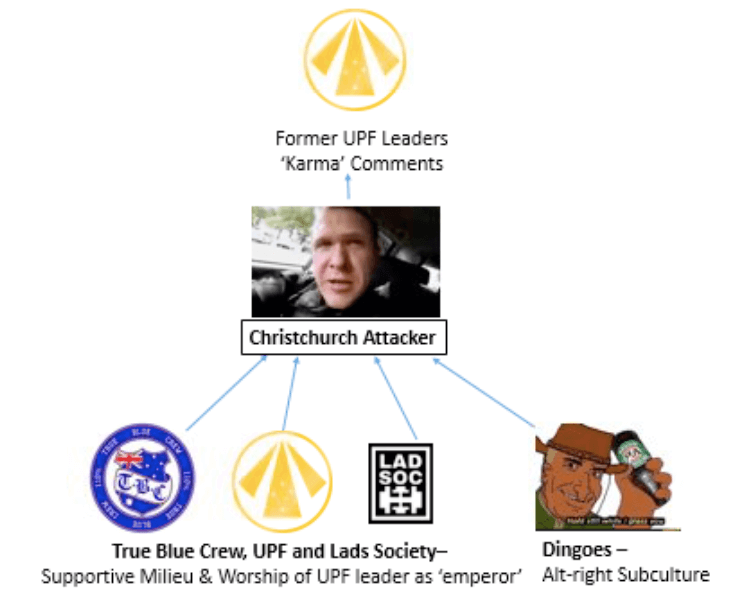
Figure 1: Linkages between Australia Far Right and Christchurch Attacker
Nowhere has this post-organisational shift been more evident in the rise to prominence of a new radical right extremist group since the writing of the Australia RRCN report, the Melbourne-based National Socialist Network. Founded by former Lads Society leader Thomas Sewell (who believed that his former formation was not “strong enough or explicit enough”)[10] at the start of January 2020, the group only came to prominence in early 2021 as news broke of forty activists engaging in a so-called ‘Third Reich hike’ in the Western Victorian Grampian mountains.[11] Subscribing to an extreme, anti-democratic, and openly neo-Nazi ideology, the group advocates National Socialism as “the only worldview” that will ensure the survival of the white race. In their eyes, only revolution (“We don’t care in what way this is achieved,” they add) is the only solution to ensure the future of white people in Australia.
Currently, the group has a small but growing following on alternative social media platforms (around 438 followers on Gab and 5,002 followers on Telegram), where it posts regularly about its offline activism (including camping, the burning of crosses, graffiti-ing, and stickering).[12] The group is very cognisant to stress the legality of its activism in these posts and actively comments on media reporting and Parliamentary activity that singles out their activities. Activities by the National Socialist Network have, however, recently seen this mask slip – with its leader Thomas Sewell arrested for affray, recklessly causing injury and unlawful assault on a security guard at Australia’s Channel Nine offices where Sewell and another activist were trying to gain access to reporters involved in an investigation on the group.[13] This has also been joined by recent (unconfirmed) reports that activists from the National Socialist Network have been arrested for possessing an improvised explosive device and extremist material.[14]
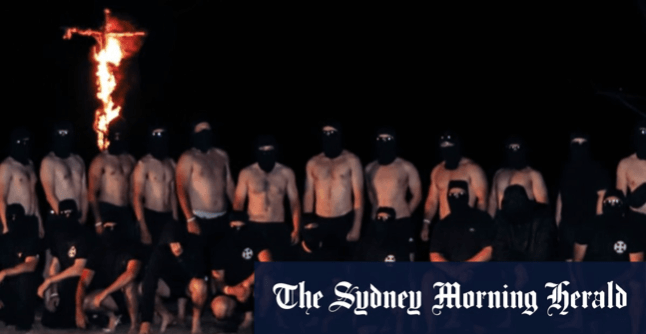
Image 1: National Socialist Network members set fire to a cross during a visit to the Grampians National Park. Hyperlink: https://www.smh.com.au/politics/federal/we-do-not-need-to-wait-for-a-christchurch-grampians-cross-burning-spurs-call-for-action-20210128-p56xer.html.
Countering Radical Right Extremist Violence in Australia: The Rhetoric-CVE Programming Gap
One of the galvanising effects of the Christchurch terror attacks was for policymakers and security officials in Australia to take the threat of violence posed by radical right extremists in Australia more seriously. Indeed, ASIO has been engaged in serious thinking about how they can tackle radical right extremism[15] and the definitional parameters it needs to use to meet this threat.[16] Australia – like New Zealand – is, however, notable due to its lack of countering violent extremism (CVE) initiatives targeted at halting the supply line to radical right extremist groups.
To date, there has been only one systematic, large-scale programme, which started as Community Action for Preventing Extremism’s (CAPE) ‘Exit White Power’ project (see screenshots below). Set up in 2012 by anti-racism NGO, All Together Now, it has moved through several stages. It does, however, show the scalability and necessity of a counter-narrative response, with groups like Reclaim Australia and the United Patriots Front having likened practising Islam to so-called ‘barbarism,’ while crassly encouraging participants at their rallies to “insult and vilify Islam five times a day if you want to.”[17] Targeted mainly at committed or radicalising individuals, it started with a website and Facebook page (“ExitWhitePower.Com” & “White Power? Discussion Page”) but has quickly become one of Australia’s premier RRCN resources.

Figure 2: “ExitWhitePower.Com” Website (L) & “White Power? Discussion Page” (R)
Conclusions and Recommendations
The report on Australia tracked radical right extremist narratives and CVE initiatives at a time of increased splintering and ideological extremity with respect to radical right extremism in Australia. Moving from street-based activism into more direct action and even terroristic forms of political violence, the report has highlighted links with the New Zealand Christchurch attacker and other violent international radical right groups able to be traced back to Australia.[18] It has also highlighted several groups (Proud Boys Australia, Lads Society, and now the National Socialist Network) whose narratives paint a metastasising threat picture, both in terms of potential and actual radicalisation of Australian citizens. Furthermore, it is clear that Australia currently houses many local versions and chapters of international radical right extremist groups’ (e.g. Antipodean Resistance, Combat 18 & Southern Cross Hammerskins) – with recent revelations emerging about the digitally-anchored US ‘accelerationist’ group, the Base, attempting to recruit Australian members.[19]
In response to these challenging circumstances, practitioners would be advised to find ways of disrupting permissive environments where anti-minority viewpoints are left to fester and making sure that grievances around migration do not escalate into active affiliation with radical right extremist groups. This is best achieved through localised and targeted counter-narrative projects that help dispel persistent myths and rumours as well as an active civic education programme that helps young people unpick difficult conversations around race, religion, and diversity. Here, it is important to note that only one notable programme to date has attempted to distribute radical right counter-narratives in the Australian context; namely, CAPE’s “Exit White Power” project.
Needless to say, there is a great opportunity to both scale up and deepen radical right counter-narrative campaigns capable of delegitimising white supremacist and ultra-nationalist narratives and conspiracies propagated by groups (such as the Proud Boys Australia, Lads Society, and now the National Socialist Network)) in Australia – if only funding and the political will would catch-up with the appetite for such programming.[20] By embarking on radical right extremist counter-narrative projects and by including these new and sensitised perspectives into strategic communications work, going forwards Australia will have a far greater chance of immunising citizens against the perils of radical right extremism and the violent ideology contained in several of the most active groups narrative’s therein.
References
[1] Stayner, T., ‘UK neo-Nazi group to become first right-wing terrorist organisation listed in Australia’, SBS News, 2 March 2021, online at: https://www.sbs.com.au/news/uk-neo-nazi-group-to-become-first-right-wing-terrorist-organisation-listed-in-australia.
[2] Kolowski, M., ‘Australia’s far-right moves to shadowy messaging service amid crackdown on digital giants’, Sunday Morning Herald, 20 March 2019, online atː www.smh.com.au/national/australia-s-far-right-moves-to-shadowy-messaging-service-amid-crackdown-on-digital-giants-20190320-p515tw.html.
[3] Karp, P., ‘Threat from extreme rightwing terrorism in Australia has increased, Asio says’ The Guardian, 16 October 2019, online at: www.theguardian.com/australia-news/2019/oct/16/threat-from-extreme-rightwing-terrorism-in-australia-has-increased-asio-says & Karp, P., ‘Asio reveals up to 40% of its counter-terrorism cases involve far-right violent extremism’, The Guardian, 22 September 2020, online at: https://www.theguardian.com/australia-news/2020/sep/22/asio-reveals-up-to-40-of-its-counter-terrorism-cases-involve-far-right-violent-extremism.
[4]McGowan, M., ‘Australian Proud Boys filmed threatening critics at a business and a home’, The Guadian, 11 February 2021, online at: https://www.theguardian.com/australia-news/2021/feb/11/australian-proud-boys-filmed-visiting-critics-homes-and-workplaces; McGowan, M., ‘Australian Proud Boys sought combat-trained supporters to ‘arrest’ police at Covid lockdown protests’, The Guadian, 15 February 2021, online at: https://www.theguardian.com/australia-news/2021/feb/15/australian-proud-boys-leader-sought-combat-trained-supporters-to-arrest-police-at-covid-lockdown-protests; & Ross, K., ‘Far-right groups have used COVID to expand their footprint in Australia. Here are the ones you need to know about’, The Conversation, 11 December 2020, online at: https://theconversation.com/far-right-groups-have-used-covid-to-expand-their-footprint-in-australia-here-are-the-ones-you-need-to-know-about-151203.
[5] Peucker, M. & Smith, D., ‘Far Right Groups in Australia: An Introduction’, in Peucker, M. & Smith, D. (eds.) The Far-Right in Contemporary Australia (London, Palgrave Macmillan: 2019), p. 7.
[6] For further elaboration of this concept, see: Ganesh, B. “The ungovernability of digital hate culture”, Journal of International Affairs. December 2018, online at: https://jia.sipa.columbia.edu/ungovernability-digital-hate-culture & Daniel Koehler, “Recent Trends in German Right-Wing Violence and Terrorism: What are the Contextual Factors behind ‘Hive Terrorism’?” Perspectives on Terrorism 12:6 (2018): pp. 72-88, online at: https://www.jstor.org/stable/pdf/26544644.pdf/.
[7] Begley, P., ‘Threats from white extremist group that ‘tried to recruit Tarrant’’, The Sydney Moring Herald, 2nd May 2019, online at: https://www.smh.com.au/national/threats-from-white-extremist-group-that-tried-to-recruit-tarrant-20190501-p51j5w.html & McGowan, M., ‘Australian white nationalists reveal plans to recruit ‘disgruntled, white male population’.’ The Guardian, 11 November 2019, online at: https://www.theguardian.com/australia-news/2019/nov/12/australian-white-nationalists-reveal-plans-to-recruit-disgruntled-white-male-population.
[8] McGown, M., ‘Christchurch shooter was active with Australian far-right groups online but escaped police attention’, The Guardian, 8 December 2020, online at: https://www.theguardian.com/world/2020/dec/08/christchurch-shooter-was-active-with-australian-far-right-groups-online-but-escaped-police-attention.
[9] Begley, P., ‘Alleged Mosque Shooters Meme Popular with Australian Far Right Group’, The Sydney Morning Herald, 15 March 2019, online at: https://www.smh.com.au/national/nsw/alleged-mosque-shooter-s-meme-popular-with-australian-far-right-group-20190315-p514ns.html.
[10] McGowan, M., ‘Christchurch shooter was active with Australian far-right groups online but escaped police attention’, The Guardian, 8 December 2020, online at: https://www.theguardian.com/world/2020/dec/08/christchurch-shooter-was-active-with-australian-far-right-groups-online-but-escaped-police-attention.
[11] McKenzie, N. & Tozer, J., ‘‘We do not need to wait for a Christchurch’: Grampians cross burning spurs call for action’, Sydney Morning Herald, 28 January 2021, online at: https://www.smh.com.au/politics/federal/we-do-not-need-to-wait-for-a-christchurch-grampians-cross-burning-spurs-call-for-action-20210128-p56xer.html.
[12] This data was accurate at the time of writing (as retrieved on 26 March 2021).
[13] McGowan, M., ‘Man linked to neo-Nazi group charged with assault after alleged attack on Nine security guard’, The Guardian, 3 March 2021, online at: https://www.theguardian.com/media/2021/mar/03/two-men-linked-to-neo-nazi-group-arrested-after-alleged-assault-on-nine-security-guard.
[14] Wilson, C., ‘Two Australian men have been charged after police allegedly found a bomb and extremist material in a raid on the homes of neo-Nazi group members’, Business Insider Australia, 7 April 2021, online at: https://www.businessinsider.com.au/men-charged-national-socialist-network-terrorism-investigation-2021-4.
[15] Karp, P.,’ Asio reveals up to 40% of its counter-terrorism cases involve far-right violent extremism’, The Guardian, 22 September 2020, online at: https://www.theguardian.com/australia-news/2020/sep/22/asio-reveals-up-to-40-of-its-counter-terrorism-cases-involve-far-right-violent-extremism.
[16] Barton, G., ‘ASIO’s language shift on terrorism is a welcome acknowledgment of the power of words’, The Conversation, 21 March 2021, online at: https://theconversation.com/asios-language-shift-on-terrorism-is-a-welcome-acknowledgment-of-the-power-of-words-157400.
[17] Connery, G., ‘Reclaim Australia Rally drowns out counter protesters’, The Canberra Times, 6 February 2016, online at:https://www.canberratimes.com.au/story/6054582/reclaim-australia-rally-drowns-out-counter-protesters/.
[18] This is in addition to known links between the attacker and European-based far right groups. See: Wilson, J., ‘Christchurch shooter’s links to Austrian far right ‘more extensive than thought’’, The Guardian, 16 May 2019, online at: https://www.theguardian.com/world/2019/may/16/christchurch-shooters-links-to-austrian-far-right-more-extensive-than-thought.
[19] Mann, A. and Nguyen, K., ‘The Base Tapes’, ABC News, 26 March 2021, online at: https://www.abc.net.au/news/2021-03-26/the-base-tapes-secret-recordings-australian-recruitment/13255994.
[20] This could be done through either tackling the bases of group identification or ideological beliefs inherent to radical right extremism.
About Hedayah's Blog Series
Hedayah publishes a monthly blog series covering a range of different topics related to counter violent extremism (CVE). These blogs highlight the latest trends and challenges faced by the CVE world and highlight topics that receive less attention in the international CVE space with a unique perspective.
The authors of the blog posts are Hedayah’s staff, Hedayah’s Fellows, and guest experts. The opinions expressed in the blogs are their own and not representative of Hedayah. We hope that these blogs will contribute to the conversation around CVE solutions, and push forward the quest for more research and innovation in the field.



